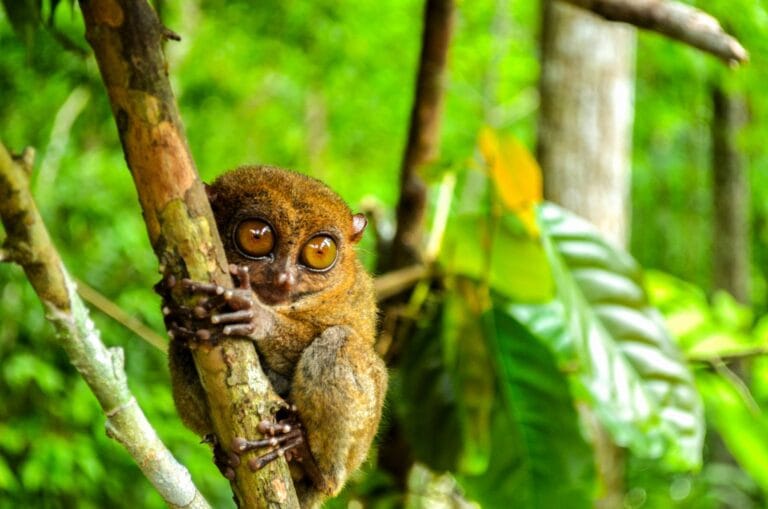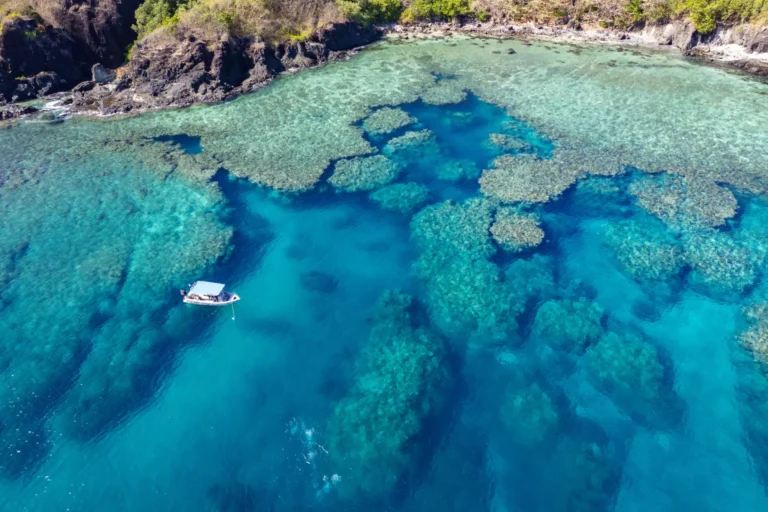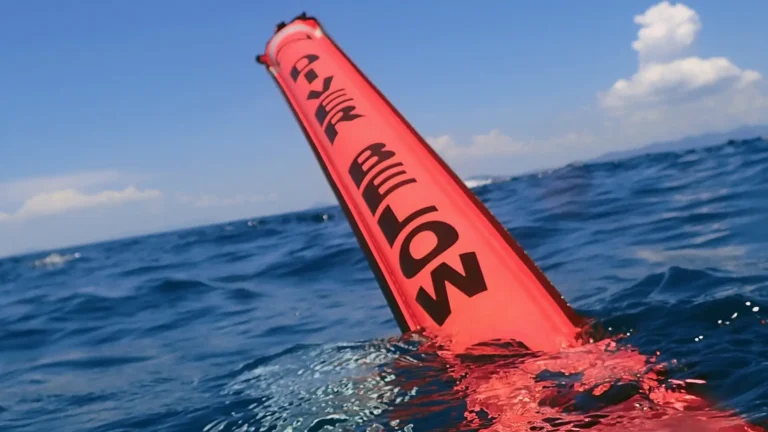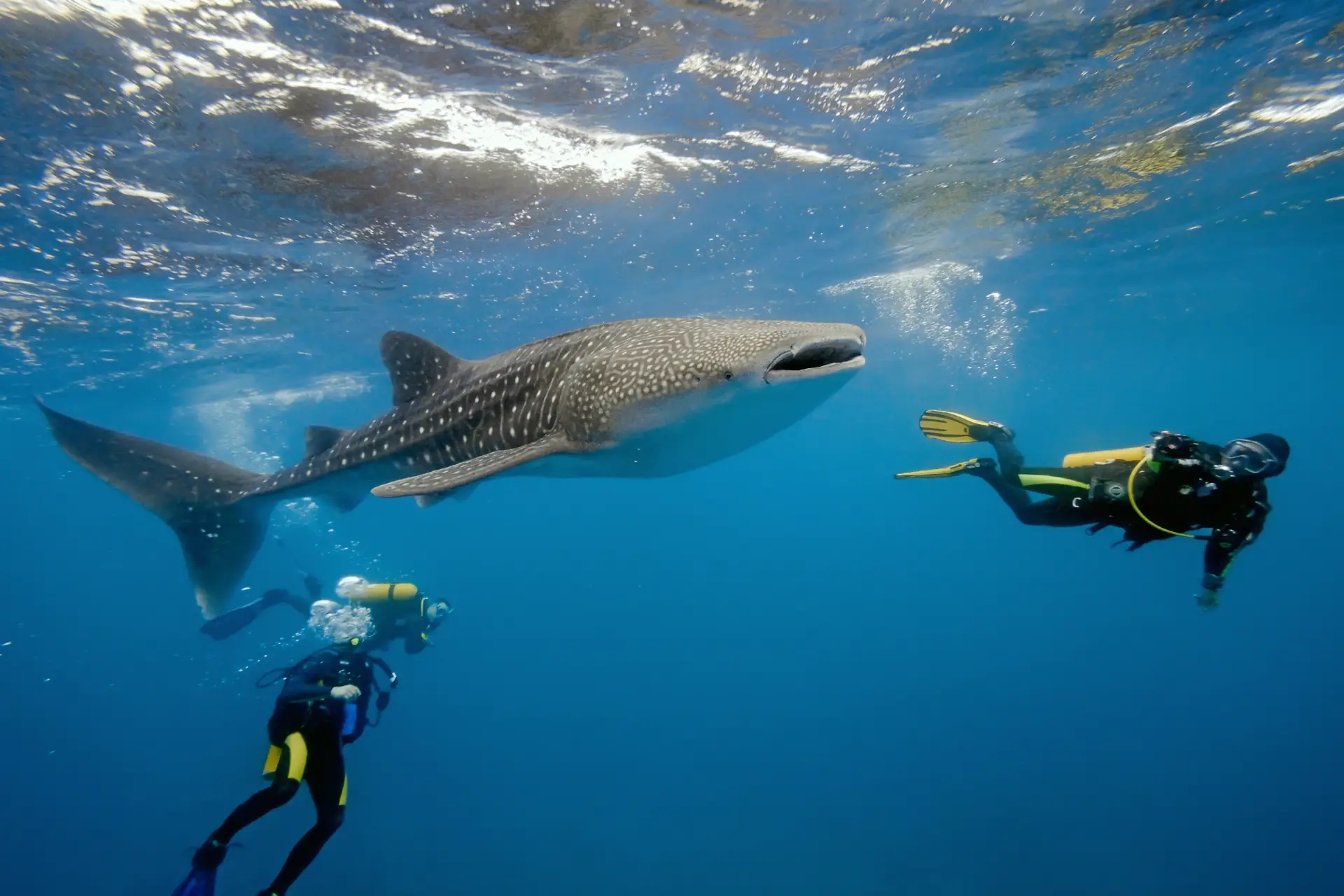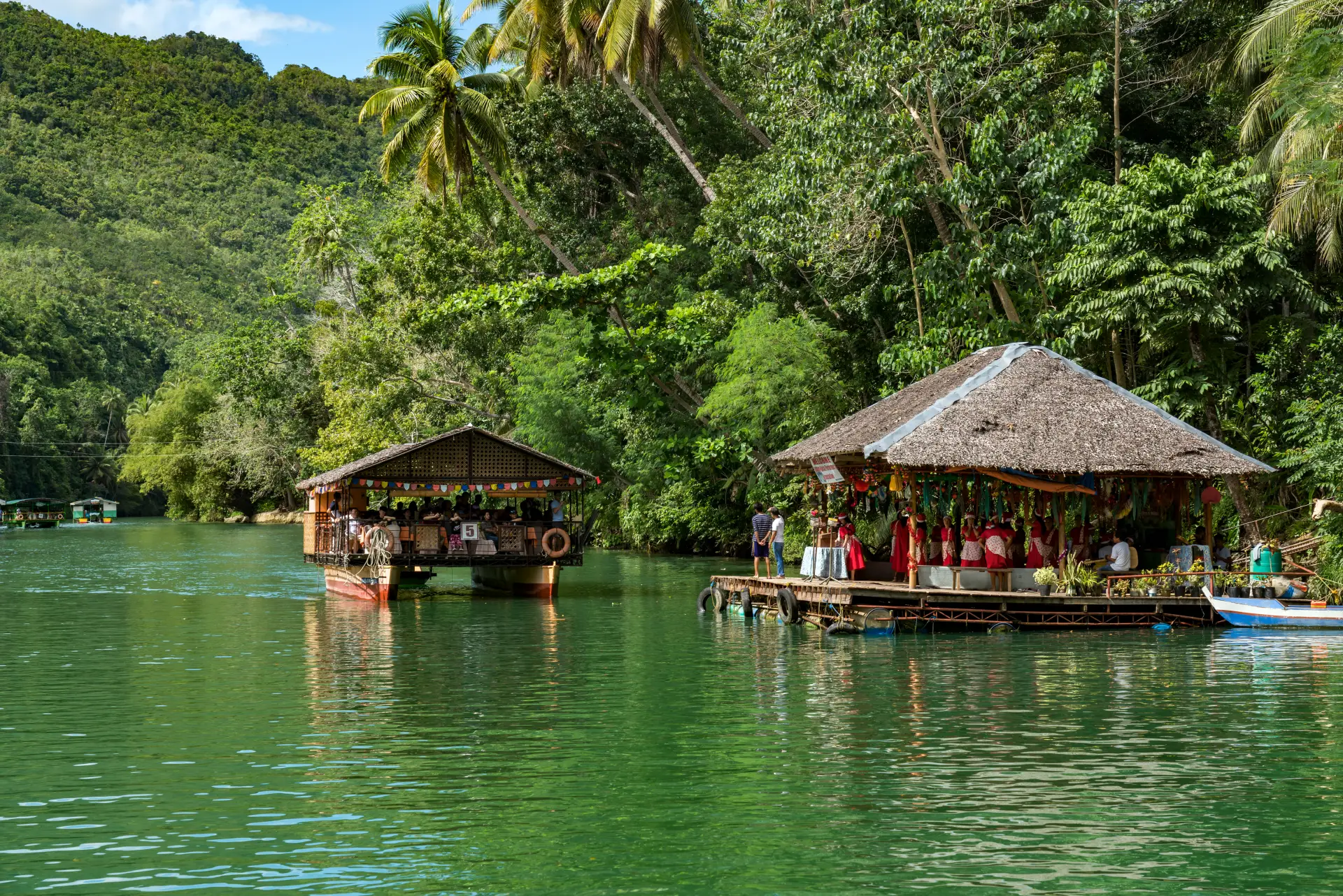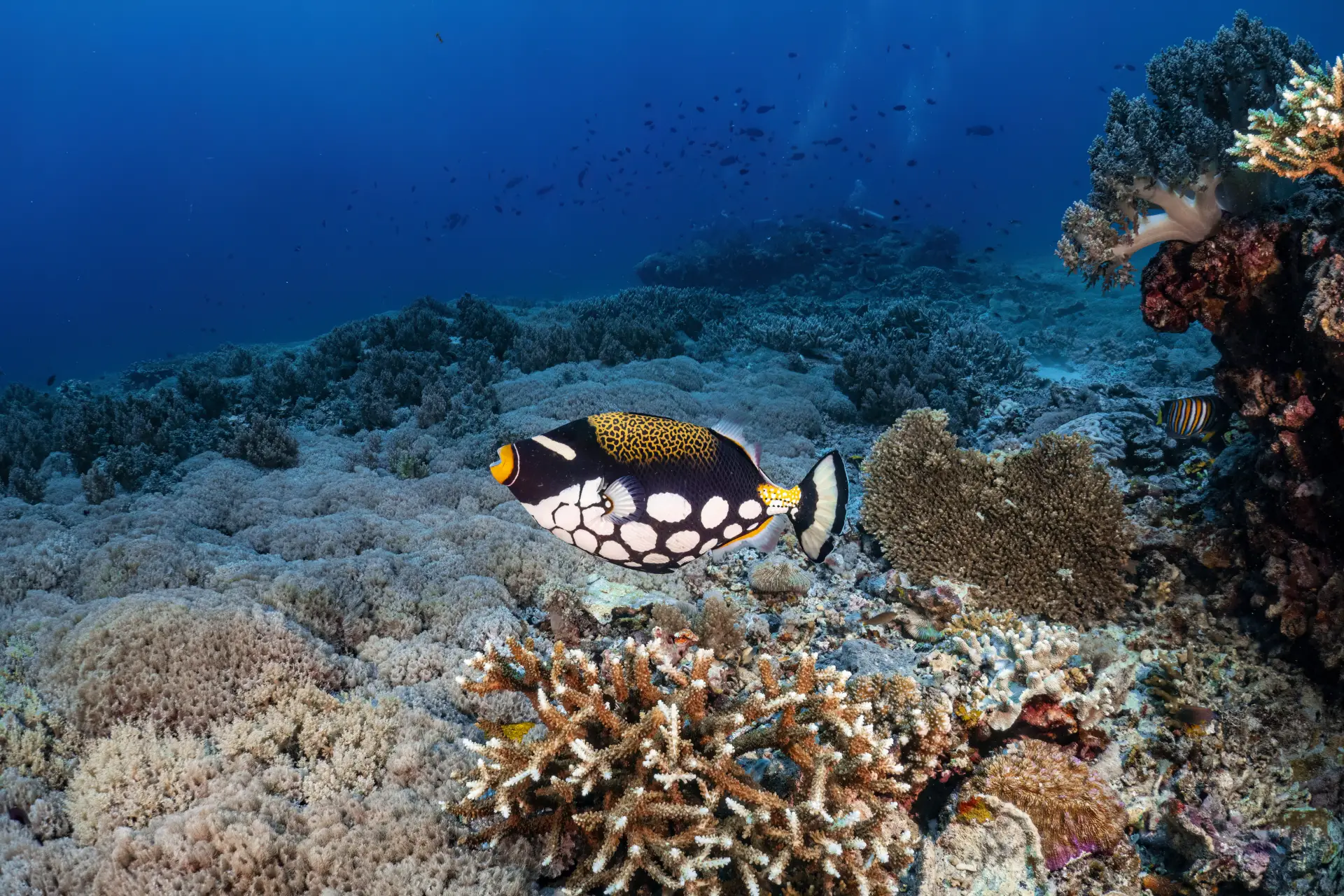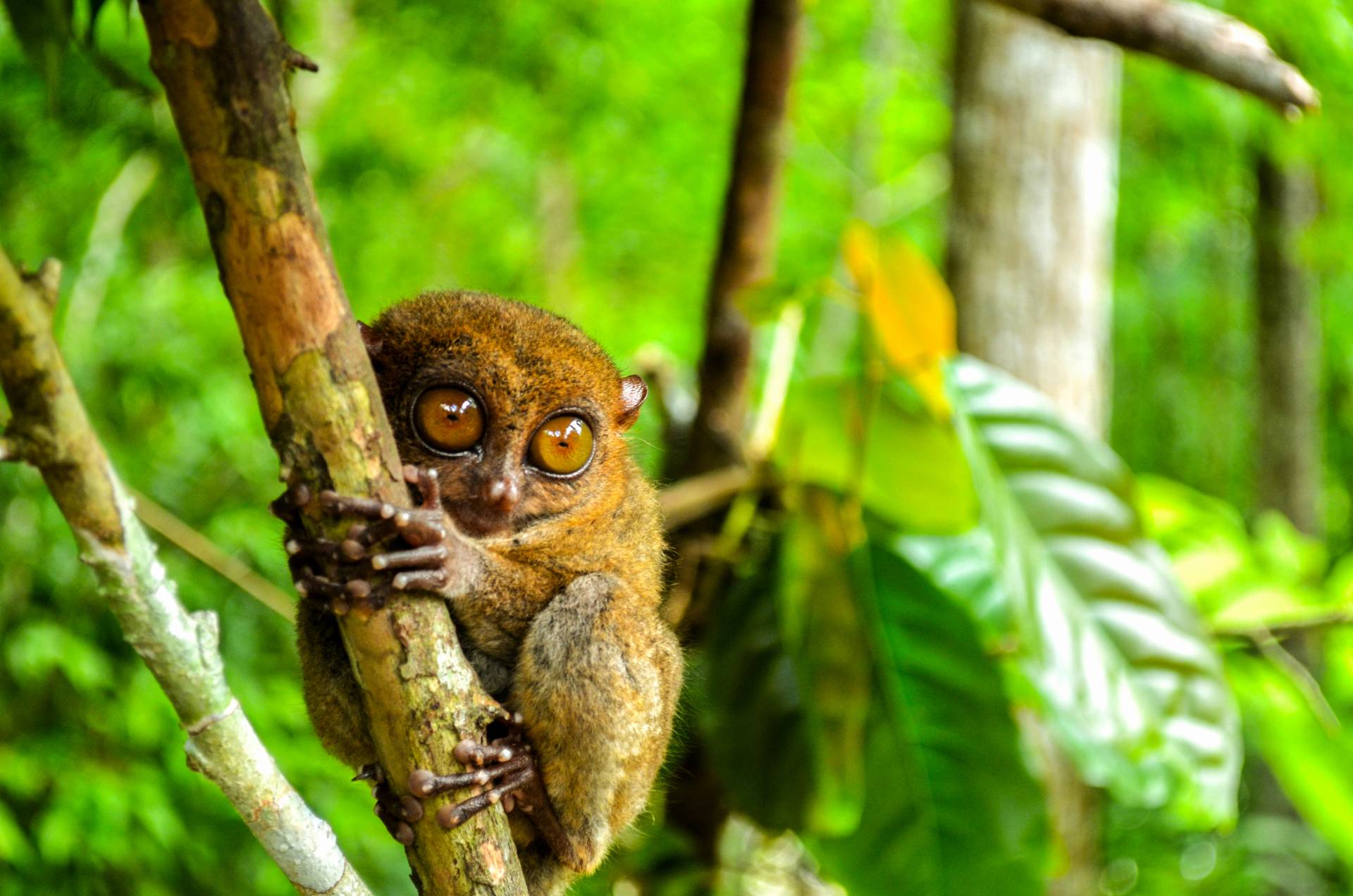The Tarsiers of Bohol: Nature’s Adorable Night Owls
Nestled in the lush forests of Bohol lies one of the world’s smallest primates: the Philippine tarsier (Carlito syrichta). These wide-eyed creatures are a symbol of Bohol’s unique biodiversity and are adored by locals and tourists alike. With their tiny size, enormous eyes, and intriguing nocturnal habits, tarsiers are a must-see for anyone visiting this beautiful island.
Whether you’re diving into Bohol’s underwater world or exploring its terrestrial wonders, encountering a tarsier is an experience that captures the magic of nature. Let’s delve into what makes these pint-sized primates so special.
What Are Tarsiers?
Tarsiers are tiny primates, typically measuring only 4-6 inches in height—small enough to fit in the palm of your hand. Despite their size, they have some remarkable features that set them apart:
- Oversized Eyes: Tarsiers have the largest eyes relative to body size of any mammal. Each eye is about the size of its brain, enabling exceptional night vision.
- Rotating Heads: With the ability to rotate their heads nearly 180 degrees, tarsiers can easily spot prey and predators in their surroundings.
- Elongated Fingers and Toes: Their long fingers and toes, tipped with suction-like pads, allow them to grip tree branches and leap with incredible agility.
- Nocturnal Lifestyle: Tarsiers are active at night, hunting insects and small vertebrates. During the day, they rest in the dense foliage of Bohol’s forests.
Where to See Tarsiers in Bohol
Bohol is home to several sanctuaries and conservation areas dedicated to protecting these endangered creatures. Two of the most popular places to see tarsiers are:
- The Philippine Tarsier Sanctuary in Corella: This sanctuary provides a safe and natural environment for tarsiers. Guided tours allow visitors to observe them in their forest habitat while learning about conservation efforts.
- Tarsier Conservation Area in Loboc: Located near the Loboc River, this area combines education and eco-tourism, offering visitors a chance to see tarsiers up close without disturbing their natural behavior.
Both locations prioritize the welfare of the tarsiers, ensuring that tourism is conducted responsibly.
Why Tarsiers Are Unique to Bohol
While tarsiers can be found in other parts of Southeast Asia, the Philippine tarsier is a distinct species that thrives in Bohol’s unique ecosystem. The island’s lush forests and warm climate provide the ideal conditions for these primates to hunt, rest, and breed. Tarsiers are an integral part of Bohol’s natural heritage and play a crucial role in maintaining the balance of its forest ecosystems by controlling insect populations.
Conservation Challenges
The tarsier’s adorable appearance and elusive nature have made them a popular attraction, but this has also led to challenges in their conservation:
- Habitat Loss: Deforestation and agricultural expansion have significantly reduced the tarsiers’ natural habitat.
- Stress from Tourism: Tarsiers are highly sensitive to noise and handling. Excessive stress can lead to health issues and even death, making it crucial to follow ethical tourism practices.
- Low Reproductive Rates: Tarsiers reproduce slowly, with females typically giving birth to only one offspring per year, making population recovery a lengthy process.
Thankfully, sanctuaries like those in Bohol are working tirelessly to address these challenges through habitat preservation, education, and community engagement.
How to Visit Responsibly
When visiting tarsier sanctuaries, it’s essential to respect the animals and their environment. Here are some tips for responsible tarsier tourism:
- Keep Quiet: Tarsiers are easily stressed by loud noises. Speak softly or avoid talking altogether while observing them.
- Avoid Flash Photography: Flash can harm their sensitive eyes. Always disable your camera’s flash.
- Don’t Touch: Tarsiers are fragile and do not tolerate handling. Observe them from a safe distance.
- Support Conservation Efforts: Choose sanctuaries and tours that prioritize the welfare of the tarsiers and contribute to conservation programs.
By following these guidelines, you can enjoy your encounter with tarsiers while helping to protect them for future generations.
Other Activities Near Tarsier Sanctuaries
Pair your tarsier visit with other must-see attractions in Bohol to make the most of your trip:
- Loboc River Cruise: Enjoy a scenic boat ride along the Loboc River, complete with local food and music.
- Chocolate Hills: Marvel at this geological wonder, featuring hundreds of dome-shaped hills that turn brown during the dry season.
- Adventure Parks: Try ziplining or paddleboarding in the lush landscapes surrounding the sanctuaries.
These activities complement your wildlife experience and showcase the diversity of Bohol’s offerings.
Why the Tarsier Experience Matters
Tarsiers are more than just an adorable photo opportunity—they represent the rich biodiversity and ecological importance of Bohol’s forests. Visiting these sanctuaries not only supports conservation efforts but also deepens your appreciation for the delicate balance of nature.
At Sierra Madre Divers, we encourage our guests to explore all aspects of Bohol, from its underwater wonders to its terrestrial treasures. The tarsier is a symbol of the island’s incredible natural heritage, and seeing one in its natural habitat is an unforgettable experience.
Plan Your Tarsier Encounter Today
Ready to meet Bohol’s most iconic resident? Pair your diving adventures with a visit to a tarsier sanctuary and immerse yourself in the beauty of Bohol’s land and sea. Contact Sierra Madre Divers for tips on planning your trip and making the most of your time in this tropical paradise!

